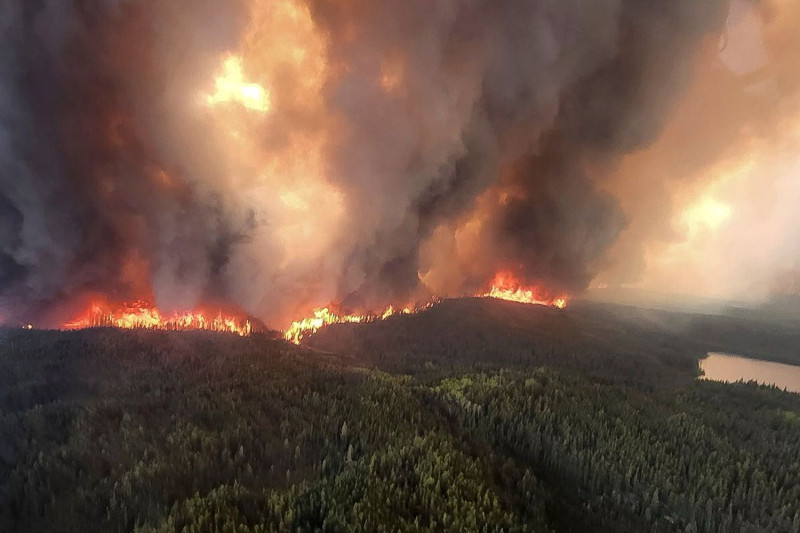A surge in Canadian wildfires has sent thick plumes of smoke sweeping across North America, triggering air quality alerts from Manitoba and Saskatchewan to major U.S. cities in the Midwest and Northeast. As of this week, around 200 active fires have scorched nearly,000 square kilometers, marking 2025 as one of the most severe wildfire seasons in recent years—second only to the record-breaking 2023 season.
Air quality maps show that cities like Toronto and Montréal are experiencing “unhealthy” Air Quality Index (AQI) readings, with values reaching 167 on Friday. In the United States, Minnesota, Wisconsin, and parts of North Dakota and Montana have also reported AQI levels considered “unhealthy,” prompting warnings for sensitive groups including children, seniors, and those with respiratory conditions.
The wildfire smoke is not just a local issue. Satellite imagery reveals that smoke has drifted more than,000 miles, even reaching Western Europe and altering sunsets in Ireland and the United Kingdom Forecasts suggest that hazy skies and poor air quality could persist as hot, dry weather continues to fuel fires across central and western Canada.
Residents are urged to monitor local air quality maps and limit outdoor activities when AQI readings rise above 100. With hotter and drier conditions predicted for July and August, experts warn that the risk of further wildfire outbreaks and deteriorating air quality remains high.

